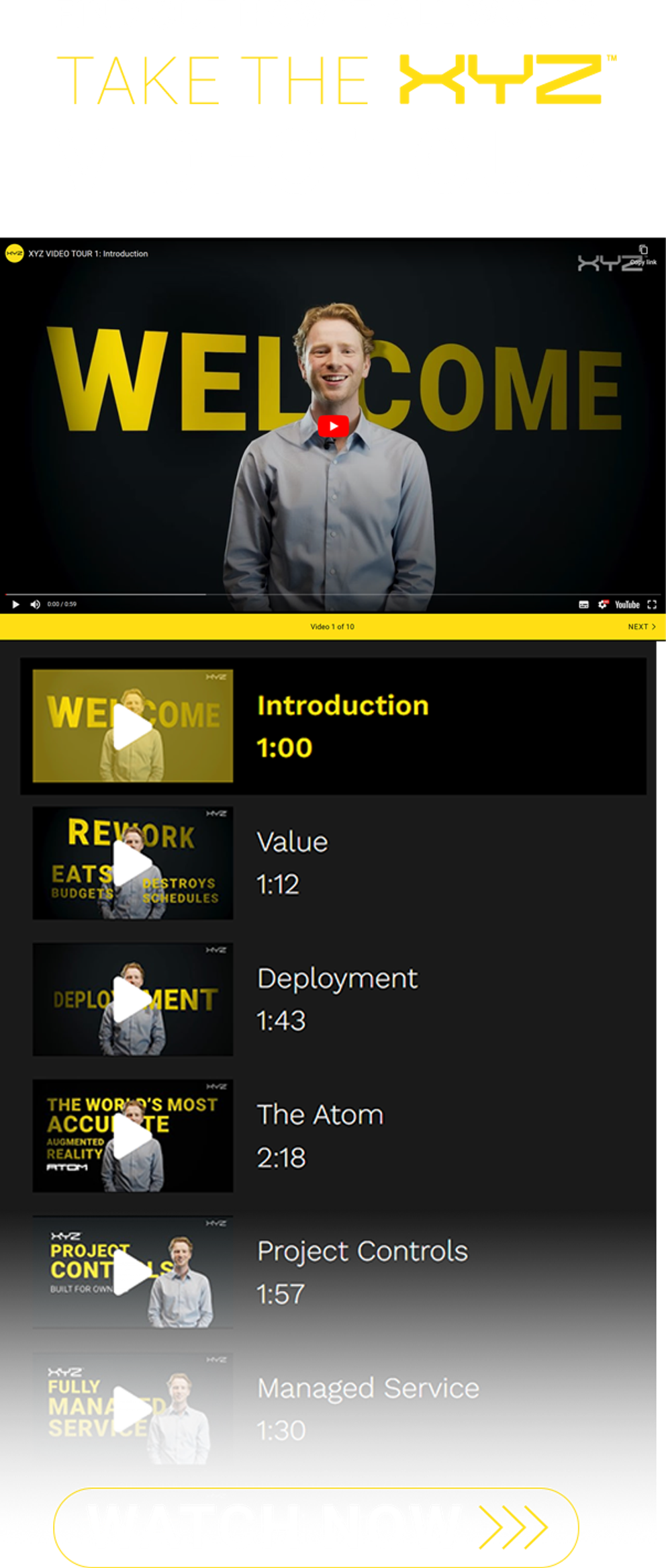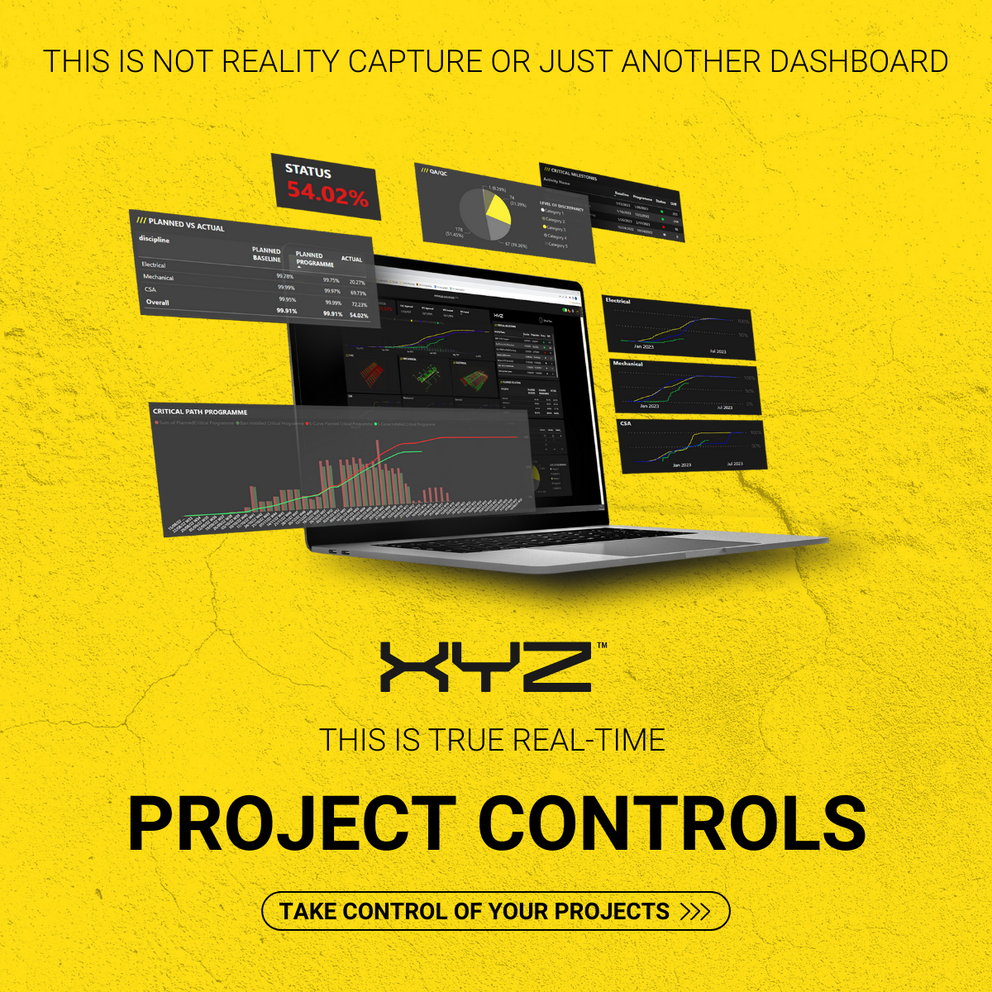-
Services
Services
Find out how we work with our clients and deliver value to construction projects from day one
-
Solutions
Solutions
Discover how all our solutions sync together to deliver construction's most powerful BIM platform to date
-
Built for
Built for
-
Industry
Industry
Understand how we support construction's biggest sectors, and hear from our clients who have experienced the power of XYZ
-
Resources
Resources
Get stuck into all our latest thought leadership, news, reports and industry leading content
-
Company
Company
Dive into what makes XYZ tick, unearth why construction is in our DNA and why we are world leaders in AR solutions

Insights
How to Boost Profit Margins in Data Center Construction: 3 Proven Tactics

02 June 2025
Written by Matt Torma, Mission Critical Director at XYZ Reality. With decades of field experience, Matt leads strategy for helping contractors deliver complex, high-value builds faster and with fewer risks.
TL;DR:
Data center construction margins are tight - often just 2–6% after overheads. This blog outlines three proven strategies to improve profitability:
Eliminate costly rework through real-time QA/QC
Speed up and improve layout precision with augmented reality (AR)
Use real-time progress tracking to avoid slippage and penalties.
Data Center Construction is one of the most competitive and margin sensitive segments in the industrial sector right now.
In the race to win work from Meta, Microsoft, Amazon, Google, Oracle, Equinix, and Digital Realty, hyperscale and colocation builders face relentless competition.
With average gross profits hovering around 8-12%, and final margins often squeezed down to just 2-6% after overheads, there’s little room for error – or price hikes.
In a market where you can’t increase your bids, the only real path to better margins is reducing construction costs.
Here are 3 practical strategies to reduce project costs on data center construction projects.
Prevent Rework Instead of Documenting It
For most contractors, QA/QC is still a reactive process: work gets laid out, installed, then verified – often days or even weeks later. By then, small errors can spiral into major issues, requiring trades to rip out and redo work. The result? Downtime, frustrated subcontractors, change orders, safety risks, and congested jobsites.
In some cases, errors push the burden to engineering, triggering redesigns, RFIs, and compromised designs – causing further delays and budget overruns.
It’s a broken cycle – and it’s costing the industry dearly. Globally, rework eats up over $625 billion every year. That’s not just frustrating – it’s unsustainable.
Instead of using reality capture tools to document what went wrong, contractors need a proactive QA/QC process that prevents issues from happening in the first place. One that flags mistakes as they happen, or better yet, detects them before installation begins – during layout.
Catching problems in real time - or eliminating them altogether – cuts rework from your project budget, improves variance reports, and boosts profitability and performance bonuses.
Speed Up Layout with AR for Better Accuracy
Layout crews set the pace onsite. They need to stay ahead of installers to avoid downtime and maintain progress, but they must balance speed with quality and accuracy of layout marks. Current layout teams are limited by 2D drawings, tape measurements, precision survey tools, or troubleshooting robotics – methods that are not only time-consuming and error-prone but also introduce inefficiencies that can lead to costly delays and rework.
The key to increasing project profitability lies in making layout teams faster and more efficient while also improving layout accuracy. Better layout means fewer errors downstream – reducing installer confusion, miscommunication, and costly rework.
Just look at Interstates: by switching to AR-powered layout and QA workflows, they transformed their layout process. Utilizing XYZ's AR platform, they accelerated Unistrut layout by 500%, completing the task 20 days faster than traditional methods. Remarkably, they achieved this using just half the usual labor, while significantly reducing rework and delays.
Figure out how to improve layout speed and accuracy and watch your profits soar!
Use Real-Time Progress Data to Stay on Track
Data center projects can’t afford delays. Hyperscalers and developers impose steep penalties on general contractors who miss RFS (Ready-for-Service) date – because every lost day means millions in unrecoverable revenue. This is known as perishable inventory.
With project values often exceeding $1 billion, even a 1% discrepancy in reporting can result in $10 million or more in misaligned billing, inaccurate forecasting, and misleading updates.
Relying on manual updates or educated guesses to track progress is a major risk. To avoid schedule slippage, you need objective, real-time data – capturing status across the entire project, down to details like cable pulls and terminations.
Camera-based reality capture doesn’t cut it either. These systems are often too slow, lack precision and don’t give the full picture of what’s really happening onsite. Delayed or inaccurate data doesn’t safeguard your schedule – it creates doubt, dispute, and delay.
On a recent high-value European build, a contractor believed the project was ahead of schedule – until real-time data showed otherwise. Within weeks, what was thought to be on track was revealed to be trending toward a multi-week delay. Thanks to live and reliable progress data, the team course-corrected in time – avoiding significant liquidated damages and unlocking millions in operational revenue that would otherwise have been lost.
With a system that delivers real-time, objective progress and earned value reporting, you can confidently protect your schedule, preserve float, avoid costly liquidated damages, and build trust with speed-to-market-driven hyperscalers and developers – paving the way for repeat business.
Final Thoughts
A mentor once told me: “Identifying a problem without offering a solution is just complaining.” So here’s the solution to the three challenges outlined above – Engineering Grade Augmented Reality™ from XYZ Reality.
- Eliminate rework with proactive, real-time QA/QC
- Increase layout speed, efficiency, and accuracy across all packages & divisions.
- Track progress in real-time for instant slippage detection & schedule management.
At XYZ Reality, we’re transforming industry challenges into profit-driving opportunities with our engineering-grade AR platform and a build it right, first time approach – empowering teams to eliminate rework, stay on schedule, and deliver with confidence.
This is more than a technology upgrade – it’s a commitment to the people behind the projects. We understand the pressure teams face on complex builds like data centers, where precision, speed, and accountability are non-negotiable. Our goal is to support the industry in building smarter, safer, and more efficiently – project after project.
See it in action: Book a free demo to explore how Engineering-Grade AR can reduce your rework and protect your margins – project after project.
This article was originally published here.








